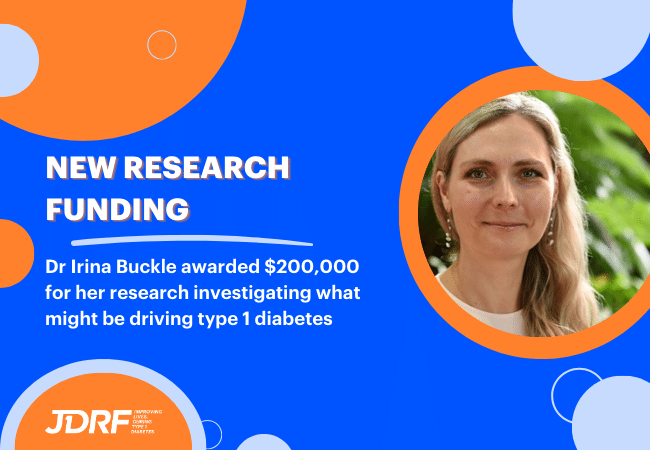Tracy’s Journey Towards a Life Free from Insulin
Before her islet transplantation, life for Tracy Humphries was unpredictable to say the least.
Tracy was diagnosed with type 1 diabetes (T1D) at age 10, and at first, her T1D journey went quite smoothly. She even lived overseas for a year and enjoyed everything that a young person should. However, as Tracy grew into adulthood, she began to struggle with erratic blood glucose levels no matter how well she tried to control them. The soaring highs and crashing lows made everyday life difficult. Tracy became ‘hypo unaware’, which means that she wasn’t able to feel the signs of a dropping blood glucose level. As most people with T1D become ‘low’ they can detect signs and symptoms which warn them they need to treat their declining blood glucose levels to avoid falling into a coma.
This means, Tracy was living with an ever-present risk to her life through an unexpected hypo.
Tracy also began to experience serious complications of T1D, including retinopathy, losing sight in one eye. Despite these daily struggles, Tracy’s life had some absolute high points – the birth of her first child, and also, the opportunity for surgery to restore her lost eyesight.
However, everything changed for Tracy on a visit to Monash Hospital, where she overheard a gentleman talking about an exciting new treatment option. She went home and did some internet research, coming across the islet transplantation procedure details.
Islet transplantation involves implanting insulin-producing islet cells into the liver of a person with T1D. The aim is to reduce the frequency and severity of hypos and potentially achieve a life free of insulin.
Tracy approached her healthcare team and was successfully referred for the islet transplantation procedure. She then underwent a series of tests to further determine her suitability for the procedure, and was admitted to the waiting list. Islet transplantation requires human donor islets, so like any donor organ, would-be islet transplant recipients must wait until an appropriate match comes along.
Tracy waited nine months. Then, 9am one Sunday morning in February 2018, she was at home when the phone call came through. Tracy quickly packed and headed straight for the hospital, to be there within the one hour window. The precious islets were on their way.
The procedure itself is quite straightforward. Under local anaesthetic, Tracy received an infusion of the islet between her ribs, into the liver’s portal vein. She was in hospital for around a week.
It’s now been several months since Tracy’s procedure. The donor islets began producing insulin inside her body, allowing her insulin requirements to drop dramatically. Tracy isn’t suffering from massive hypos and high levels any more, and her blood glucose control has improved “monumentally”.
She even took part in Run Melbourne in July this year, fundraising more than $1,000 for JDRF and completing her 5km distance goal.
Because it usually takes two procedures to get enough islets into the body for insulin independence, Tracy is now on the waiting list for her second, and hopefully final, procedure. Tracy plans to to update us again after this, and wants to be able to say that she’s finally living a life free from type 1 diabetes and the need for insulin.
Tracy says that the transplant is not for everyone and does come with its own risks, and a lifetime of taking anti-rejection drugs, but for her personal health situation it was a great opportunity and has helped alleviate some of her struggles with T1D.
Her biggest hope is that one day she can just walk out the door of her home, free from the worries of T1D and the burdens of its management.
JDRF was instrumental in bringing islet transplantation out of the lab and into clinics. Read more about the journey of islet transplantation from bench to bedside.




